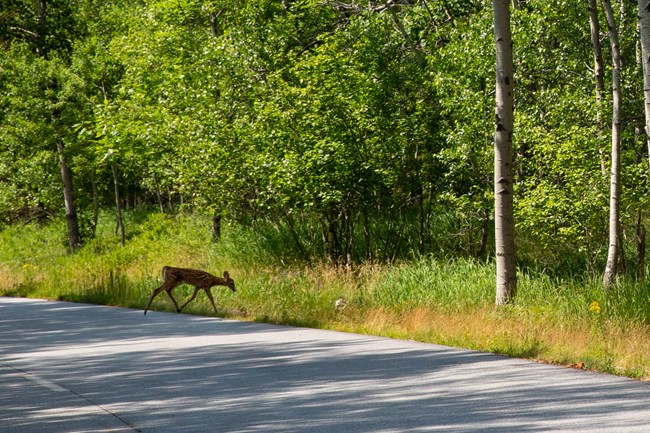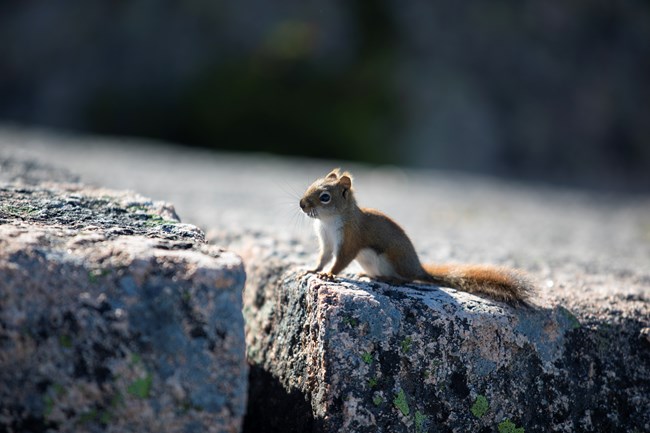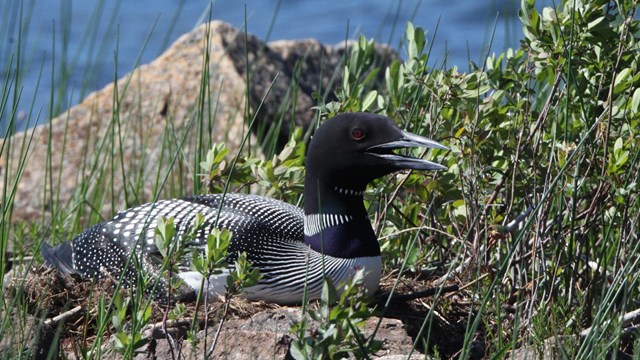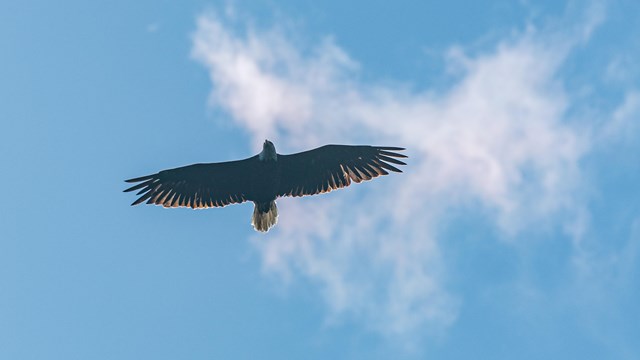
Photo by Will Greene, Friends of Acadia, NPS 
Photo by Emma Forthofer, Friends of Acadia, NPS Are there otters in Otter Cove? Seals in Seal Harbor? Eagles at Eagle Lake?As anyone who has had the good fortune of experiencing it knows, there’s nothing quite like spotting a wild animal in its natural habitat. In fact, one of the many reasons that visitors come to Acadia each year is the opportunity to see wildlife. While seeing wildlife is never guaranteed, knowing a little more will increase the likelihood and make those chance encounters even sweeter. All it takes is patience, keen senses and a little luck! For suggestions on locations in the park with potential for wildlife sightings, check out this Tour de Wildlife. Wildlife Etiquette and SafetyKeep your distancePlease give the animals the space they need! Depending on the animal, there are recommended safe distances to view them at. Stay on the trailStepping off trail to get a closer view can disrupt wildlife and can cause damage to the fragile ecosystems in the park. Don’t feed animalsFeeding wildlife can habituate them to human presence and hurt their chances of survival. Make your campsite or picnic wildlife safeAll human food and pet food must be stored in a hard-sided food locker or enclosed vehicle when not in use. Additionally, make sure to clean up your site when you leave, and dispose of garbage properly. Even though black bear sightings are rare, racoons and other animals with a great sense of smell can still become negatively impacted when trash and food is improperly stored. Slow down for wildlifeThe park speed limits exist to keep visitors and wildlife safe. Use extra caution when driving at dawn, dusk or nighttime, as these tend to be the hours when wildlife is most active. 
Wildlife Viewing FAQsCan I approach or pet wild animals in Acadia?Many seemingly docile animals can react violently to pets and people if approached. For your safety do not approach wildlife and always keep pets on a leash. What if I think the animal needs help?Seeing a baby deer on its own or a seal pup on a beach may seem like a cry for help. However, many times this is normal animal behavior. Interfering with the animal may do more harm than good. But what if the animal approaches me?Wildlife may not know better, but YOU do. Although it may feel flattering if any kind of wildlife approaches you, back away and maintain a safe distance. It’s your responsibility and your safety - help us keep wildlife wild. If you have a wildlife emergency, call park dispatch at 207-288-8791 or 911. Where can I see a moose? Are there bears here?These common questions that rangers get about wildlife often pertain to “the big two”—moose and bears. Even though Maine is well known for both, it’s very rare to see either in Acadia. On Mount Desert Island, many years can pass between confirmed moose sightings. For the very patient visitor, the Schoodic Peninsula provides a slightly better chance to see a Moose because of its attachment to the mainland.Black bear are present throughout Acadia but are infrequently spotted. For better moose and bear sighting opportunities, head north to Katahdin Woods and Waters National Monument or some of Maine’s beautiful state parks. So what CAN I see?Even if you don’t see a bear or a moose, don’t fret! There is still a lot to see if you know where and how to look. Besides, painted turtles, peregrine falcons, porcupines and harbor porpoises need fan clubs too! Use our wildlife pages to learn more about the incredible species that call Acadia home, and check out the tips below for a safe and successful wildlife adventure. What if I see something unusual?If you see a very rare animal or invasive wildlife, please let us know. Pack, Plan, and Prepare
Photo by Yehyun Kim, Friend of Acadia, NPS Know your habitats and habitsIf there is a specific animal you’re hoping to see, read up on what types of environments it likes to live in and when it is the most active. For example, many mammal species such as beavers are crepuscular—meaning they’re most active at dusk and dawn. Appreciate the localsIt’s human nature to look for things that are big, new and different. When you’re exploring the park, take a minute to observe what’s around you. What are the ants doing? What kind of bird sings that song? There’s always something new to learn about an animal—even one you’ve observed 100 times. Plus, if you stare at a red squirrel long enough, it’s impossible not to smile. Virtual Wildlife Viewing
Webcam: Eye on Acadia
Several times each week, you can watch real-time imagery of park wildlife and scenic areas with a new mobile, remote webcam. 
Watching Wildlife
Don't wait until your next trip to a national park to see wildlife. Check out wildlife webcams from locations all across the country! |
Last updated: February 25, 2022
